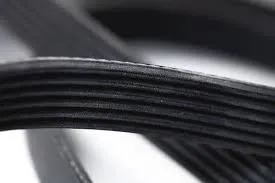- Arabic
- French
- Russian
- Spanish
- Portuguese
- Turkish
- Armenian
- English
- Albanian
- Amharic
- Azerbaijani
- Basque
- Belarusian
- Bengali
- Bosnian
- Bulgarian
- Catalan
- Cebuano
- Corsican
- Croatian
- Czech
- Danish
- Dutch
- Afrikaans
- Esperanto
- Estonian
- Finnish
- Frisian
- Galician
- Georgian
- German
- Greek
- Gujarati
- Haitian Creole
- hausa
- hawaiian
- Hebrew
- Hindi
- Miao
- Hungarian
- Icelandic
- igbo
- Indonesian
- irish
- Italian
- Japanese
- Javanese
- Kannada
- kazakh
- Khmer
- Rwandese
- Korean
- Kurdish
- Kyrgyz
- Lao
- Latin
- Latvian
- Lithuanian
- Luxembourgish
- Macedonian
- Malgashi
- Malay
- Malayalam
- Maltese
- Maori
- Marathi
- Mongolian
- Myanmar
- Nepali
- Norwegian
- Norwegian
- Occitan
- Pashto
- Persian
- Polish
- Punjabi
- Romanian
- Samoan
- Scottish Gaelic
- Serbian
- Sesotho
- Shona
- Sindhi
- Sinhala
- Slovak
- Slovenian
- Somali
- Sundanese
- Swahili
- Swedish
- Tagalog
- Tajik
- Tamil
- Tatar
- Telugu
- Thai
- Turkmen
- Ukrainian
- Urdu
- Uighur
- Uzbek
- Vietnamese
- Welsh
- Bantu
- Yiddish
- Yoruba
- Zulu
Шіл . 27, 2024 17:51 Back to list
Exploring the Role of Engine Belts in Vehicle Performance and Maintenance Solutions
Understanding Engine Belts The Unsung Heroes of Automotive Performance
When we think about the intricate workings of a car engine, images of cylinders, pistons, and spark plugs often come to mind. However, one crucial component that often goes unnoticed is the engine belt. These belts play a vital role in the overall functioning of the engine and are essential for the vehicle’s performance and longevity. In this article, we will explore the various types of engine belts, their functions, maintenance, and signs of wear that every car owner should be aware of.
Types of Engine Belts
There are primarily three types of belts in most automotive engines the serpentine belt, the timing belt, and the V-belt. Each serves a specific purpose.
1. Serpentine Belt This is the most common type found in modern vehicles. The serpentine belt is a long, continuous belt that powers multiple components, including the alternator, power steering pump, water pump, and air conditioning compressor. Its design allows it to effectively drive all these accessories using a single belt, resulting in improved efficiency and reduced weight.
2. Timing Belt The timing belt is less visible than the serpentine belt but is crucial for the engine's operation. It synchronizes the rotation of the crankshaft and camshaft to ensure that the engine's valves open and close at the proper times during each cylinder's intake and exhaust strokes. A malfunction in the timing belt can lead to catastrophic engine damage, making timely replacement essential.
3. V-Belt These are more traditional belts that are often used to drive individual components, such as the alternator or air conditioning compressor. V-belts have a trapezoidal cross-section, which allows them to grip the pulleys securely. While they have largely been replaced by serpentine belts in many applications, some older vehicles still utilize them.
Functions of Engine Belts
The primary function of engine belts is to transfer power from the engine’s crankshaft to various engine components, allowing them to operate effectively. The serpentine belt powers accessories like the alternator, ensuring the battery remains charged, while the timing belt ensures that the engine components work in harmony, preventing misalignment that could lead to engine failure.
engine belt

Maintenance and Replacement
Proper maintenance of engine belts is crucial to ensure the optimal performance of your vehicle. Regular inspections are recommended, as belts can wear and stretch over time. For serpentine belts, mechanics often recommend a replacement interval of around 60,000 to 100,000 miles, though this can vary based on the vehicle manufacturer's guidelines.
Timing belts are critical components that typically have a replacement interval of 60,000 to 100,000 miles as well. Failing to replace a timing belt at the recommended interval can lead to severe engine damage, which can be costly to repair.
Signs of Wear and Tear
Car owners should be vigilant for signs of wear and tear on their engine belts. Common indicators include
- Cracks or Fraying Inspect belts for visible cracks, fraying edges, or missing portions. - Squealing Noises A high-pitched squeal when starting the engine or while driving may indicate a loose or worn serpentine belt. - Engine Overheating A failing water pump (often driven by a serpentine belt) can cause the engine to overheat.
Conclusion
In summary, engine belts are essential components that contribute significantly to the proper functioning of your vehicle. Understanding the different types of belts, their functions, and the importance of regular maintenance can help car owners avoid costly repairs and ensure a smooth driving experience. Regularly checking for signs of wear and adhering to manufacturer replacement recommendations will go a long way in enhancing vehicle performance and longevity. The next time you pop the hood of your car, take a moment to appreciate these unsung heroes of automotive engineering!
-
Korean Auto Parts Timing Belt 24312-37500 For Hyundai/Kia
NewsMar.07,2025
-
7PK2300 90916-T2024 RIBBED BELT POLY V BELT PK BELT
NewsMar.07,2025
-
Chinese Auto Belt Factory 310-2M-22 For BMW/Mercedes-Benz
NewsMar.07,2025
-
Chinese Auto Belt Factory 310-2M-22 For BMW/Mercedes-Benz
NewsMar.07,2025
-
90916-02660 PK Belt 6PK1680 For Toyota
NewsMar.07,2025
-
drive belt serpentine belt
NewsMar.07,2025

